mobile View, to the German Version tap the flag


- Republic of Ecuador
- democratic presidial republic
- own name: República del Ecuador
• Flags
• Historical Flags
• Meaning/Origin of the Flag
• Coat of Arms
• Meaning/Origin of the Coat of Arms
• Aircraft Roundel
• Map
• Numbers and Facts
• History
• Origin of the Country's Name
• Galapagos Islands
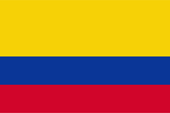
National and merchant flag,
ratio = 2:3,
Source, by:
Corel Draw 4,
Flaggen und Wappen



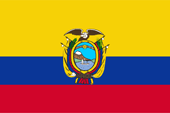
State and naval flag,
ratio = 2:3,
Source, by:
Corel Draw 4,
Flaggen und Wappen





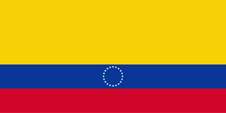
Official flag of the munizipal authorities,
ratio = 1:2,
Source, by: Flags of the World



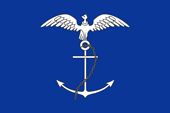
Naval jack,
ratio = 2:3,
Source, by: Flags of the World



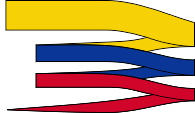
Masthead pennant,
Source, by: Flags of the World
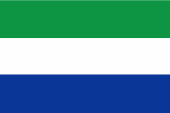
Flag of the Galapagos Islands,
Source, by: Flags of the World,
More info? → here




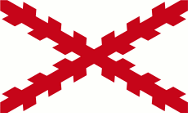
16th century to 1785,
to the Spanish sphere of influence,
Source, by: Wikipedia (EN)



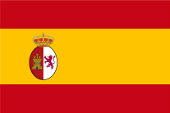
1785–1822,
to the Spanish sphere of influence,
Source, by: Wikipedia (EN)



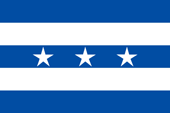
1820–1822,
National flag,
Source, by:
Wikipedia (DE)



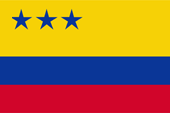
1822–1830,
Flag of Greater Colombia,
Source, by: Die Welt der Flaggen



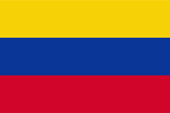
1830–1845,
National flag(?),
Source, by:
Flags of the World



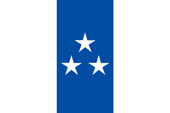
March 1845,
National flag,
Source, by:
Wikipedia (DE)



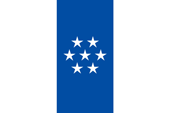
November 1845,
National flag,
Source, by:
Wikipedia (DE)




1860–1900,
National flag,
Source, by:
Flags of the World



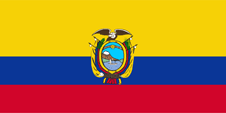
1900–2009,
State and naval flag,
ratio = 1:2,
Source, by:
Corel Draw 4,
Flaggen und Wappen





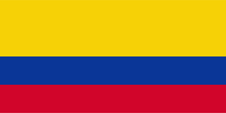
1900–2009,
National and merchant flag,
ratio = 1:2,
Source, by:
Corel Draw 4,
Flaggen und Wappen




The first flag of the independent state was hoisted during an uprising against the Spaniards in 1820, when in the province of Guayaquil, as a from the Spaniards liberated area, a flag with alternating five stripes in blue and white and three white stars in the middle was hoisted. The independence from Spain followed in 1822 as the State of Greater Colombia, of which today's Ecuador was a part. The flag of Greater Colombia is described as horizontal yellow-blue-red striped at this time, but once with three blue stars in the upper corner and once with a coat of arms in the middle. Greater Colombia split up in 1830 into Venezuela, Colombia and Ecuador. It is not really known which flag was flying in Ecuador now. The flag was probably striped horizontally in yellow, blue and red, without the coat of arms of Greater Colombia or without the three stars. Some sources also describe a separate coat of arms in the center of the flag. In 1845 there was a liberal revolution, as a result of which a new flag was adopted. It was white-blue-white striped vertically and initially showed three stars in the middle blue stripe, later seven, or even nine. Until 1860 the situation remained confusing (and not only in terms of the flag), four governments fought each other at the same time, the country sank into chaos. In 1860 the conservative Gabriel García Moreno was able to assert himself and end the chaos in the country. He reintroduced the yellow-blue-red flag as it is used to this day. On 7th of November in 1900 the aspect ratio of the flag was set to 1:2, in 2009 it was changed to 2:3. On 13th of March in 2003, the National Congress passed the resolution 24-047, which regulates the design of the coat of arms. It came into force on 21st of March in 2003. The colors there are determined as follows: yellow = pt 116, blue = pt 287, red = pt 186. The flag shows three horizontal stripes in yellow, blue and red in the ratio 2:1:1. The broader yellow stripe was actually arranged to give place for coats of arms or such things, however Ecuador doesn't use this, and placed the coat of arms in the middle. The colours yellow, blue and red should symbolize the separation of the country (colour of the country: yellow) from the colonial might of Spain (colour of the country: red) by the ocean (blue). Yellow stands as well for the wealth of the country, for the sunshine and the grain fields. Blue stands for the heaven, the ocean and the rivers, and red symbolizes the for the independence given blood. This combination of colours goes back to the Venezuelan freedom fighter Francicso de Miranda (1750–1816). He used first a flag with this colours. From this point of time the flag was used in various some changed designs. For the first time it was in use already in the year 1807 during a campaign of the liberation army against places in the north of Venezuela. Miranda chose yellow, blue and red as colours. It is often assumed that Miranda would have chosen "light blue", which can also be found on some flag representations from this region and time. This is problematic. Flags as historical finds are often viewed with the modern eye, and a specific color designation is quickly used. That ignores completely the fact that the light blue is due to washout and bleaching, a property known to Indigo (no other dye was known at that time) until today and also suitably exploited. Venezuela and Colombia use similar flags, a hint at the once historical unification of the countries Ecuador, Venezuela and Colombia within Greater Colombia.
Source:
Die Welt der Flaggen,
eluniverso.com,
Metodología para la normalización gráfica,
Wikipedia (DE)

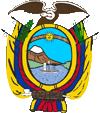
since 1900,
Coat of arms of Ecuador,
Source:
Flaggen und Wappen,
Corel Draw 4

The coat of arms showes on an oval shield the highest mountain of the land, the Chimborazo, and in the foreground a ship as symbol for the trade. Up in the shield the sun of liberty and the zodiacal signs of those month of the year 1845, in which the revolution tookes place. Above the shield a condor. He is the symbol of the independence. Underneath the shield a fagot. It embodys the republican state's order. On 13th of March in 2003, the National Congress passed the resolution 24-047, which regulates the design of the coat of arms. It came into force on 21st of March in 2003.
Source:
Die Welt der Flaggen,
Wappen und Flaggen aller Nationen,
Flaggen Wappen Hymnen

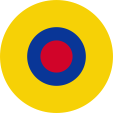
Aircraft Roundel,
Source, by: Wikipedia (EN)
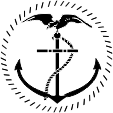
Flugzeugkokarde for Naval Aviation,
Source, by: Wikipedia (EN),
Ecuadorian_Air_Force_roundel.svg: sladyNaval_Jack_of_Ecuador.svg: Denelson83, Huhsunquderivative work: NikNaks talk - gallery - wikipedia, CC BY-SA 3.0, via Wikimedia Commons

Location:
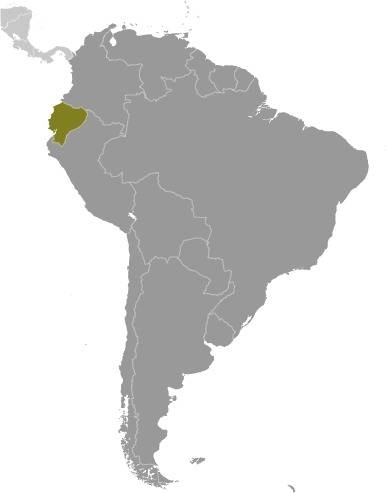
Source: CIA World Factbook
Map of the country:
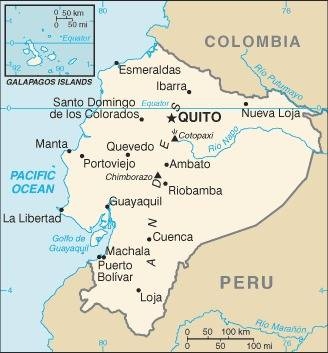
Source: CIA World Factbook

Area: 109.483 square miles, thereof Galapagos Islands 3.092 sq.mi.
Inhabitants: 17.400.000 (2019), thereof 72% Mestizos, 7% native Indians, 7% of African descent and Mulattos, 6% Europeans (thereof 3.000 Germans)
Religions: 72% Roman Catholic
Density of Population: 159 inh./sq.mi.
Capital: Quito, 2.736.000 inh. (2019)
official Language: Spanish
other Languages: Quechua, Shuar
Currency (to 2000): 1 Sucre (S) = 100 Centavos
Currency (from 2000): 1 US-Dollar (USD, $) = 100 Cent
Time Zone: GMT – 5 h
Source:
Wikipedia (D),
Deutsche im Ausland

1465–1534 · province of the Inca Empire
1533–1534 · Spanish capture
1822 · independence from Spain
1822–1830 · to Great Colombia
1830 · state independence
1875–1930 · crisis, revolts, civil wars
1941 · occupation of the El Oro province by Peru
1941–1942 · war against Peru
1942 · ceding of the Province of El Oro to Peru
1948–1960 · economic boom
1972 · start of the mineral oil mining
1972–1978 · military dictatorships
1978 · constitution, return to the democracy
1983 · beginning economic decline
1995 · military quarrels with Peru, Ecuador has to cede territories one more
26th of October in 1998 · border and peace treaty with Peru
Source:
Atlas zur Geschichte,
Weltgeschichte,
Wikipedia (D)

As the name of the country suggests, this goes back to the position of the country under the equator. The name has its roots in a Franco-Spanish expedition of the 18th century, century, which had surveyed the position of the equator across the country. However, the area has been summarized in the Spanish time under the name "Real Audiencia de Quito" (judicial district of Quito), which initially finished in 1810 to the proclamation of the 'Republic of Quito', and it consisted of only two years.
Source:
Handbuch der geographischen Namen,
Wikipedia (D)


![]()






















































